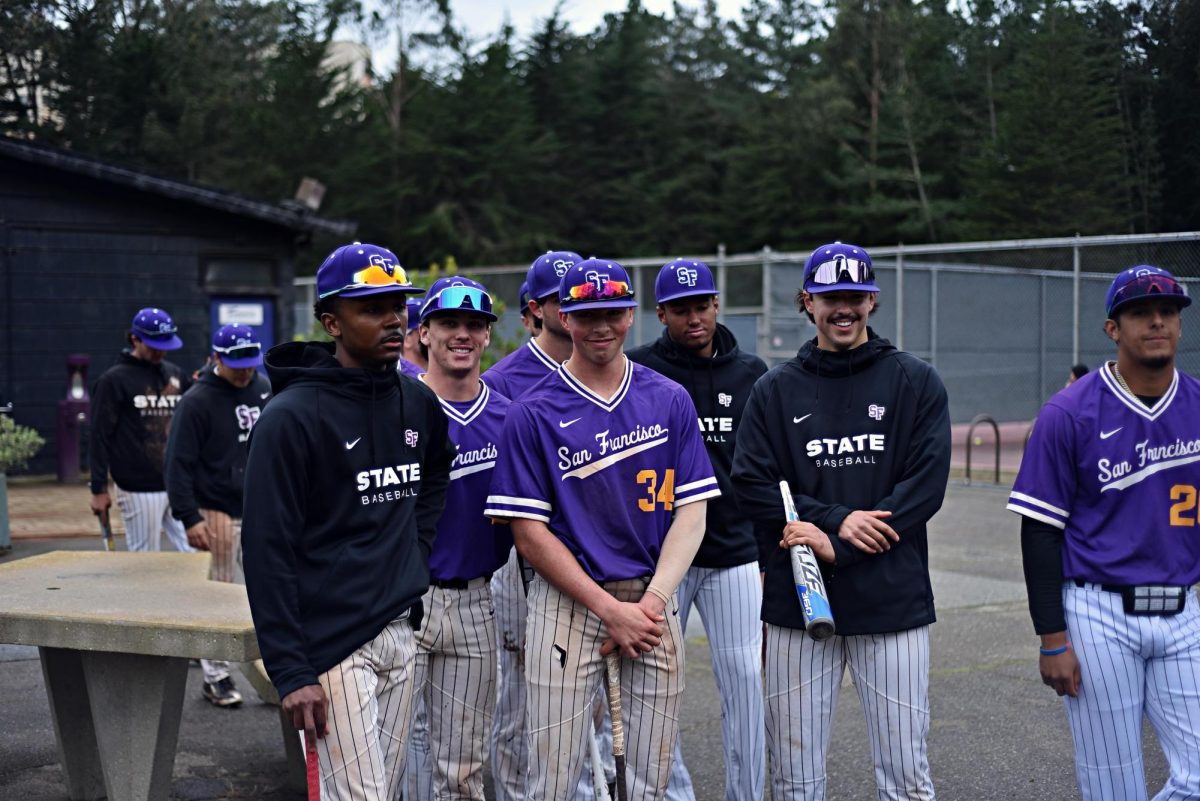In an old building on the north end of Alcatraz Island, Alan Harrison recently stood on a small stage over concrete floors where he remembers roller skating as a child. He also remembers the helicopters, he said, sent by the Coast Guard in an attempt to force him and everyone else off the island.
That was in 1969: Student-led activists from the group Indians of All Tribes had reclaimed the Rock as Indigenous land, sparking a historic 19-month Alcatraz occupation, known to have shaped the modern Indigenous rights movement. From Nov. 20-23, some of those activists returned to the island along with their families and members of the public to celebrate the occupation’s 50th anniversary.
“Anyone who was here has been changed by the experience,” Harrison said.
He arrived on Alcatraz with his mother when he was 8 years old, in a group guided by the leaders of the occupation: Richard Oakes, an SF State student who had recently helped create the university’s Native American Studies department, and Dr. LaNada War Jack, then-head of University of California, Berkeley’s Native American Student Organization.
On the second day of the 50th-anniversary celebration, War Jack introduced Harrison as they stood on stage alongside several other veterans of the occupation, all of whom came to the island as children or young adults. The day before, veteran occupiers were invited by the National Park Service to repaint lettering on the outside of the former prison. Now, the words “Indians Welcome” and “Indian Land” stand out in fresh red paint for the first time since the occupation.
“That spark that started here on Alcatraz Island, it’s still with me,” said Mabel Ann Eagle Hunter, who came to the island when she was 25. “It was the most beautiful feeling to see all of us out here, letting them know that we’re still here fighting. It was the first time I really felt free.”
The occupation began on Nov. 20, 1969, and lasted until June 10, 1971. It was organized as a response to “Indian termination policies” that ended federal recognition of sovereign tribes. To secure their place on the island, the occupiers relied on an 1868 treaty allowing American Indians to settle on unused federal land, which included Alcatraz, since the prison closed in 1963. In a proclamation written shortly after they arrived, Indians of All Tribes offered to buy the land for $24 in glass beads and red cloth — “a precedent set by the white man’s purchase of a similar island about 300 years ago,” the proclamation reads. That similar island was Manhattan.
Soon, hundreds flocked to Alcatraz to offer support. At its peak, the occupiers numbered around 400, according to an article published by SF State’s Student Center. There was an elected council of leaders, and everyone old enough had to work.
“Everybody had a job; everybody did something,” said Rosemary WhiteWater, a veteran occupier, at the 50th anniversary.
She came to Alcatraz when she was 15 and spent time working in the kitchen.
“What I learned while I was here is how to take care of other people,” she added.
Initially, the government ordered the occupiers to leave. A barricade was placed around the island, and when that proved ineffective, officials agreed to hold formal negotiations with Indians of All Tribes.
The activists’ demands included a full deed to the island as well as the establishment of an Indian university, a museum and a cultural center. After making it clear those demands would not be met, the government adopted a position of non-interference, according to a book written by Dr. Troy Johnson, the former director of the American Indian Studies program at Cal State Long Beach.
By 1971, with outside support dwindling and many of its former leaders gone, the occupation was nearing its end. On June 10 of that year, Johnson wrote, “armed federal marshals, FBI agents, and special forces police swarmed the island and removed five women, four children, and six unarmed Indian men.” Those fifteen people were the only occupiers left.
In response to the occupation, Congress passed the Indian Self-Determination and Education Assistance Act in 1975, effectively ending the termination policies protested by the occupiers.
Around the world, indigenous communities drew inspiration from what happened on Alcatraz. Efforts toward Indigenous sovereignty sprang up in New Zealand, Australia, Norway, Guatemala and Hawaii throughout the 1970s.
“Alcatraz served as sort of a catalyst for organizing at the time,” said Joanne Barker, chair of the American Indian Studies Department at SF State, during a panel last month called “From Alcatraz to Mauna Kea.” “It marked a moment of re-asserting treaty rights and an identity that wasn’t a victim.”
The building where the veteran occupiers spoke on Nov. 21 was once used as a factory where prison inmates made clothes and furniture, and then as a makeshift roller rink for kids like Harrison. Now it’s used as a gallery, where black and white photographs of the occupation are displayed along the walls. Several of the photos show young activists, fists in the air, faces turned toward the sun.
“The spirit I got from here,” said Eagle Hunter, “that light — that’s where it all started for me.”












